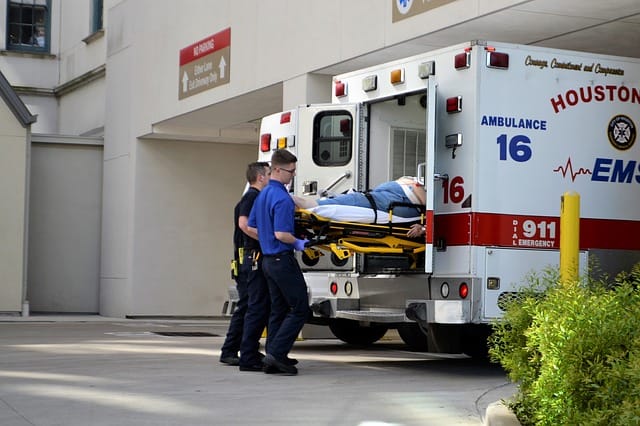The views/opinions expressed in this post is of the writer only. This Website may or may not agree or subscribe to them.
By: Ken Bednasz, Vice President of Application Engineering, Telit
In the last decade, consumers across the globe have quickly adopted new innovations. Consider the fact that within a span of 10 years, Internet use doubled, jumping from 26 percent of the global population in 2009 to 56 percent in 2019, and smartphone adoption rose from 26 million to an estimated 2.5 billion.
There is no denying the impact of these conveniences, which have arguably changed every aspect of modern life. But with technology advancing at a rapid pace and increasing volumes of data clogging fixed and wireless communication networks, both the US Government and private sectors are taking notice of the implications to the nation’s 9-1-1 system and first responders including emergency medical services, firefighters and law enforcement agencies.
Recognising the critical need to upgrade legacy communication systems with a wireless broadband network, federal government agencies are rolling out two initiatives—Next Generation 911 (NG911) and First Responder Network Authority (FirstNet).
Being developed separately but on combining, they will create the future of public safety. Envisioned in the aftermath of the September 11 attacks in 2001, FirstNet’s top priority is to ensure the reliability of a secure, high-speed wireless network exclusively for first responders, while NG911 will enable citizens to provide additional information to 9-1-1 operators via text, photos and videos almost instantly.
Being built in public-private partnership with AT&T, FirstNet utilizes Band 14, which represents 20 MHz (megahertz) of highly desirable spectrum in the 700 MHz band that gives first responders the additional coverage and capacity they need. Since deployment began in 2018, AT&T has taken great strides, announcing in May 2019 that FirstNet coverage had expanded to more than 7250 public safety agencies across 50 states, with device connections exceeding 600,000 and achieving a consistent network speed 25 percent faster than any commercial network.
In addition to supporting voice, data, text and video communications, FirstNet will enable connections among a wide range of devices with built-in Band 14 access, from wearables such as body cameras to vehicles and drones, all with the capacity to relay information in real time.

According to statements by AT&T’ President of Operations Scott Mair, FirstNet is being “architected” to assist AT&T in its efforts to provide 5G coverage on its spectrum below 6 GHz. These are radio frequencies commonly used by wireless networks and home routers. Supporting its evolution to 5G, AT&T’s buildout includes new equipment with software that is easily upgradeable. Deployed on macro towers, it leverages millimeter-wave that delivers tremendous data throughput.
With the connectivity that 5G promises, drones alone could tackle some of the most pressing issues faced by first responders. In emergency situations, gathering vital information is one of the biggest challenges, especially in dangerous circumstances and hard to reach areas. It is one of the reasons why cellular connected drones are fast becoming an essential and preferred tool for first responders.
A recent report from the Center for the Study of the Drone at Bard College revealed that over 900 state and local first-responder agencies have bought drones in recent years, two-thirds of them law enforcement. Enabled by IoT technologies, they offer significant advantages, particularly in disaster relief and crime intervention. In addition to providing cost-effective aerial surveillance, drones can maneuver quickly, transmit high-resolution imaging and data in real time and serve as advanced reconnaissance before first responders are dispatched to a scene—all of which can expedite rescues and dramatically reduce physical risk for public safety personnel.
With more first responders and law enforcement agencies opting into FirstNet, training and education have become imperative. In addition to proprietary tools developed, institutions such as Texas A&M University’s (TAMU) Internet2 Technology Evaluation Center (ITEC) host and support training exercises to give police officers and other first responders hands-on experience with FirstNet capabilities. Equipped with devices and applications, they run through scenarios, such as search-and-rescue missions, building collapses, vehicle collisions and more. At the March 2019 ITEC Winter Institute, first responders were able to share ‘live’ video from drone-based cameras during a simulated earthquake event, gaining first-hand experience with a technology that can significantly decrease response times for medics to attend to injured victims.
Jared VandenHeuvel, program coordinator for the Texas Department of Public Safety, participated in the workshop and underscored the value of these training exercises in helping first responders and police officers learn the intricacies and functions of smart dedicated devices, something they previously did not depend on in the field.
It’s clear that for agencies considering FirstNet, and in preparation for the transition to NG911, embracing new technology is just the beginning. Planning and bringing all the stakeholders to the table will help speed adoption while shortening the learning curve. Through collaborative efforts of industry, academia and government, America is poised to realize a new era in public safety.
Image by F. Muhammad from Pixabay
About Ken Bednasz

Ken Bednasz is the Vice President of Application Engineering for Telit and is responsible for the technical support and module certification for Telit’s products. Ken has been with Telit since 2006 and has been instrumental in leading innovative product introductions with North American network operators. Ken has over 20 years of experience in the cellular industry. Prior to Telit, he worked for Sony Ericsson Mobile Communications and holds multiple patents and publications in the area of cellular communications. He earned a degree in electrical engineering from the Rochester Institute of Technology in New York.
